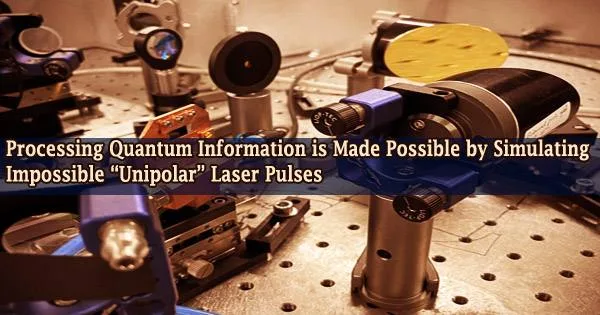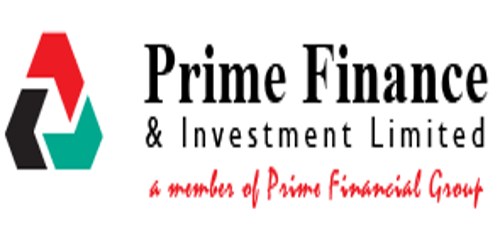We may be closer to room temperature quantum computing if a laser pulse can alter quantum information while avoiding the intrinsic symmetry of light waves. The study, which was organized by academics from the Universities of Regensburg and Michigan, may also speed up traditional computing.
Drug development, weather forecasting, and cybersecurity encryption are just a few examples of situations where quantum computing has the potential to speed up answers.
Quantum bits, or qubits, are different from conventional computer bits in that they may simultaneously encode both a 1 and a 0. In essence, this makes it possible for quantum computers to explore several scenarios simultaneously rather than sequentially.
Since these mixed states don’t stay for very long, information processing must be done more quickly than is possible with electronic circuits. While the energy states of qubits can be changed using laser pulses, other methods of computing, such as a room-temperature technique, are also feasible if charge carriers used to encode quantum information could be moved about.
The shape of the wave is also a difficulty with terahertz light, which oscillates quickly enough to supply the speed and lies between infrared and microwave radiation. Specifically, positive and negative oscillations that add to zero must be produced by electromagnetic waves.
Electrons and other charge carriers may be moved by the positive cycle. However, the negative cycle eventually draws the charges back to their starting point. The quantum information must be safely controlled by an asymmetric light wave.
“The optimum would be a completely directional, unipolar ‘wave,’ so there would be only the central peak, no oscillations. That would be the dream. But the reality is that light fields that propagate have to oscillate, so we try to make the oscillations as small as we can,” said Mackillo Kira, U-M professor of electrical engineering and computer science and leader of the theory aspects of the study in Light: Science & Applications.
The resulting terahertz emission is stunningly unipolar, with the single positive half-cycle peaking about four times higher than the two negative ones. We have been working for many years on light pulses with fewer and fewer oscillation cycles. The possibility of generating terahertz pulses so short that they effectively comprise less than a single half-oscillation cycle was beyond our bold dreams.
Rupert Huber
Since only positive or only negative waves are physically improbable, the multinational team devised a method to achieve the greatest possible outcome. With two lengthy, low-amplitude negative peaks around a very sharp, high-amplitude positive peak, they effectively produced a unipolar wave.
Because of this, the negative peaks are too small to have much of an impact, while the positive peak is powerful enough to transfer charge carriers.
In order to construct the terahertz emission through the migration of electrons and holes, which are essentially the voids left behind when electrons move in semiconductors, the researchers meticulously engineered nanosheets of a gallium arsenide semiconductor.
The nanosheets, which are manufactured in the laboratory of Dominique Bougeard, a professor of physics at the University of Regensburg in Germany, are each around the thickness of one thousandth of a hair.
The semiconductor nanosheets were then placed in front of a laser by Rupert Huber’s team, who is also an associate professor of physics at the University of Regensburg. The near-infrared pulse produced electrons when it struck the nanosheet.
The electrons accelerated because they liked being separated from the holes due to the structure of the nanosheets. The electrons were then drawn back by the pull of the holes.
The laser pulse’s energy was released by the electrons when they reconnected with the holes as a powerful positive terahertz half-cycle followed by a faint, protracted negative half-cycle.
“The resulting terahertz emission is stunningly unipolar, with the single positive half-cycle peaking about four times higher than the two negative ones,” Huber said. “We have been working for many years on light pulses with fewer and fewer oscillation cycles. The possibility of generating terahertz pulses so short that they effectively comprise less than a single half-oscillation cycle was beyond our bold dreams.”
The team then plans to experiment with quantum information processing methods by controlling electrons in quantum materials at room temperature using these pulses. The processing of conventional information at ultrafast speeds could likewise be done using the pulses.
“Now that we know the key factor of unipolar pulses, we may be able to shape terahertz pulses to be even more asymmetric and tailored for controlling semiconductor qubits,” said Qiannan Wen, a Ph.D. student in applied physics at U-M and a co-first-author of the study, along with Christian Meineke and Michael Prager, Ph.D. students in physics at the University of Regensburg.
German universities Helmut Schmidt University and Justus Liebig University Giessen collaborated on the experiment and the characterization of the nanosheets. This research was supported by the German Research Foundation (DFG), W.M. Keck Foundation and the National Science Foundation.
















